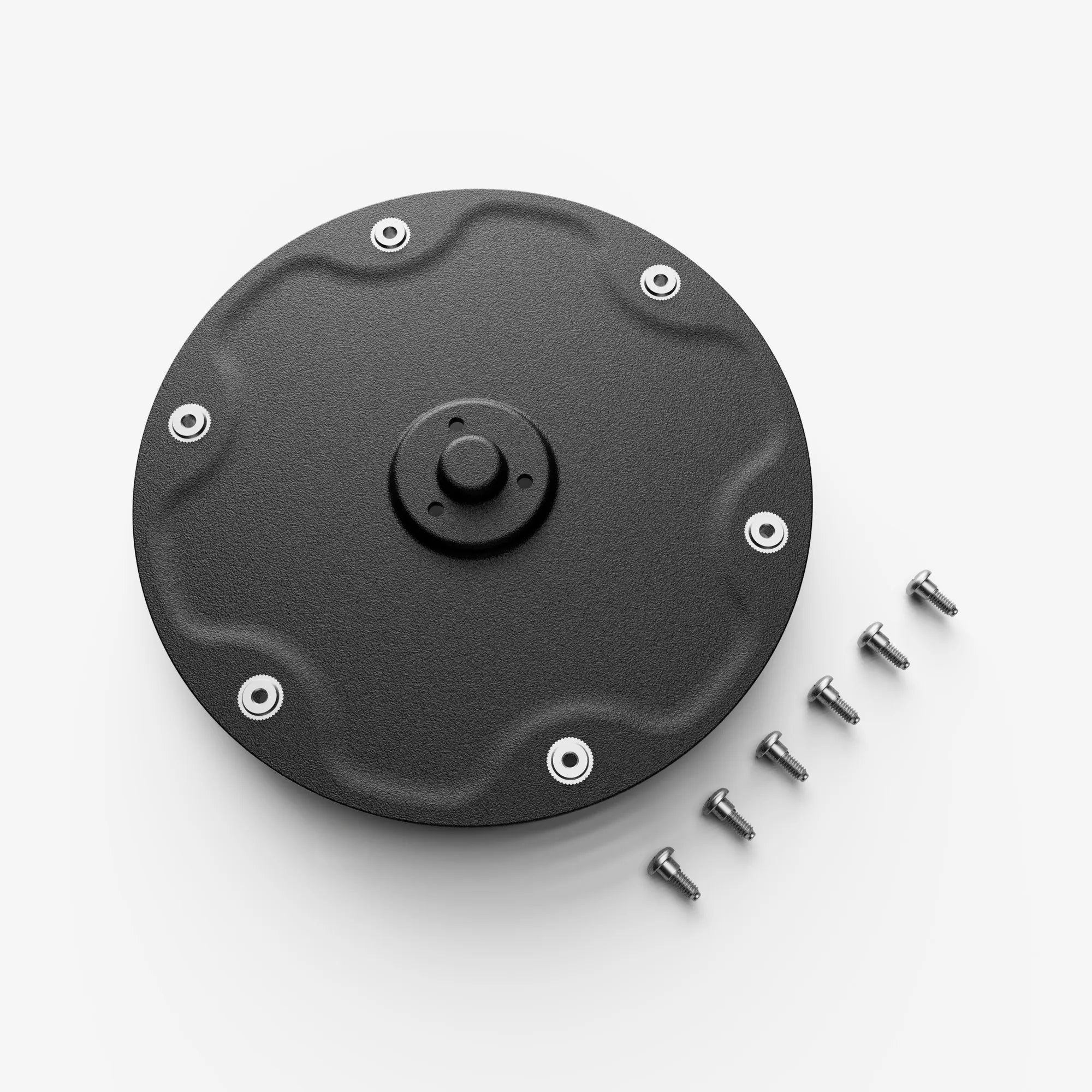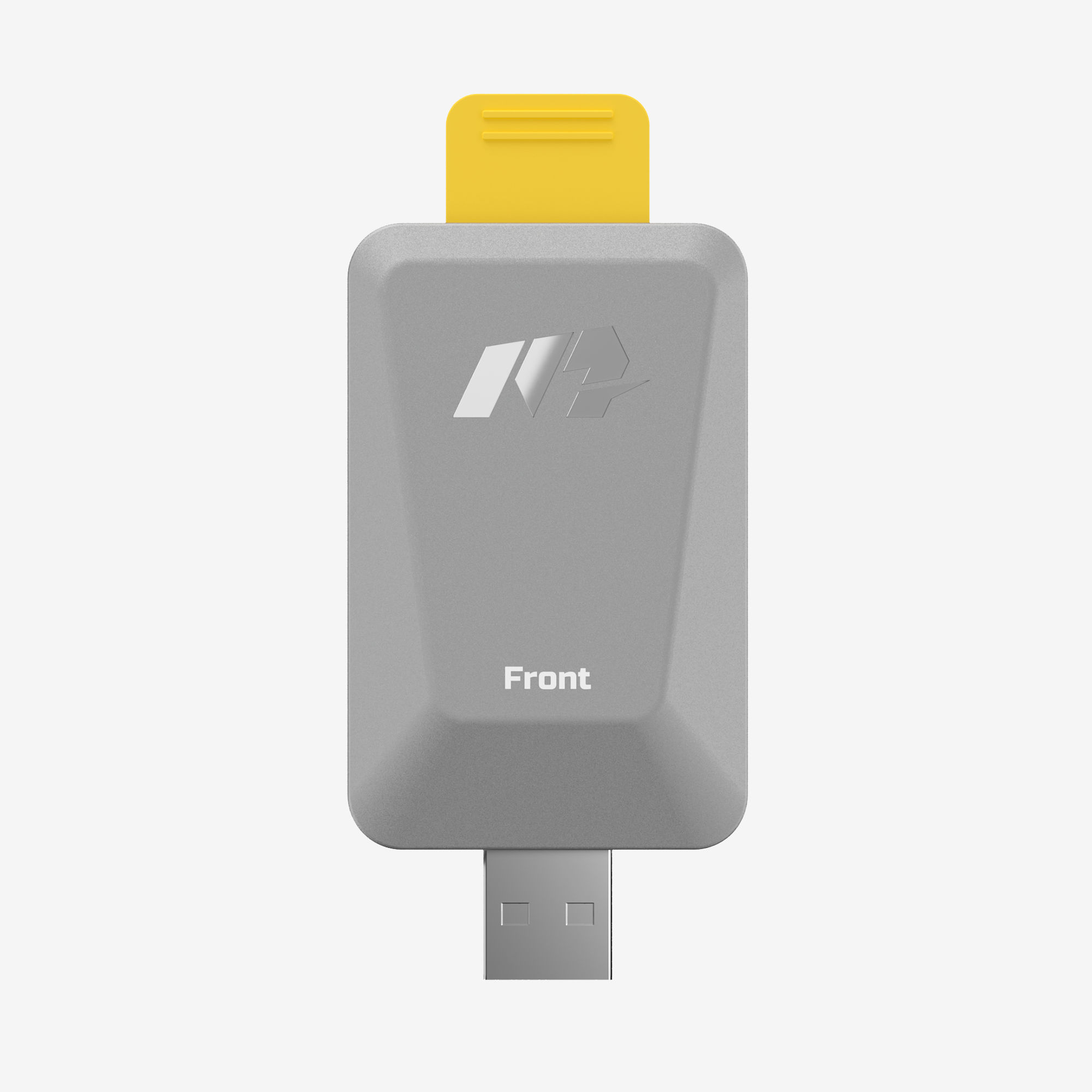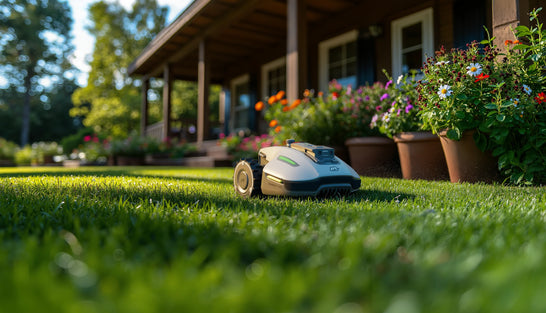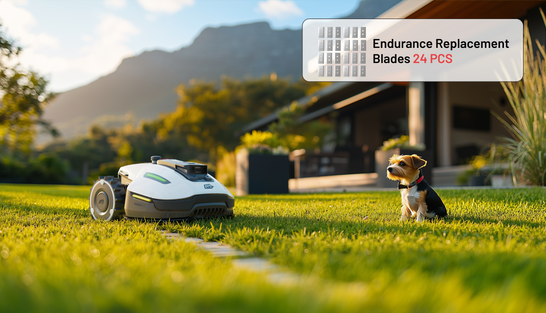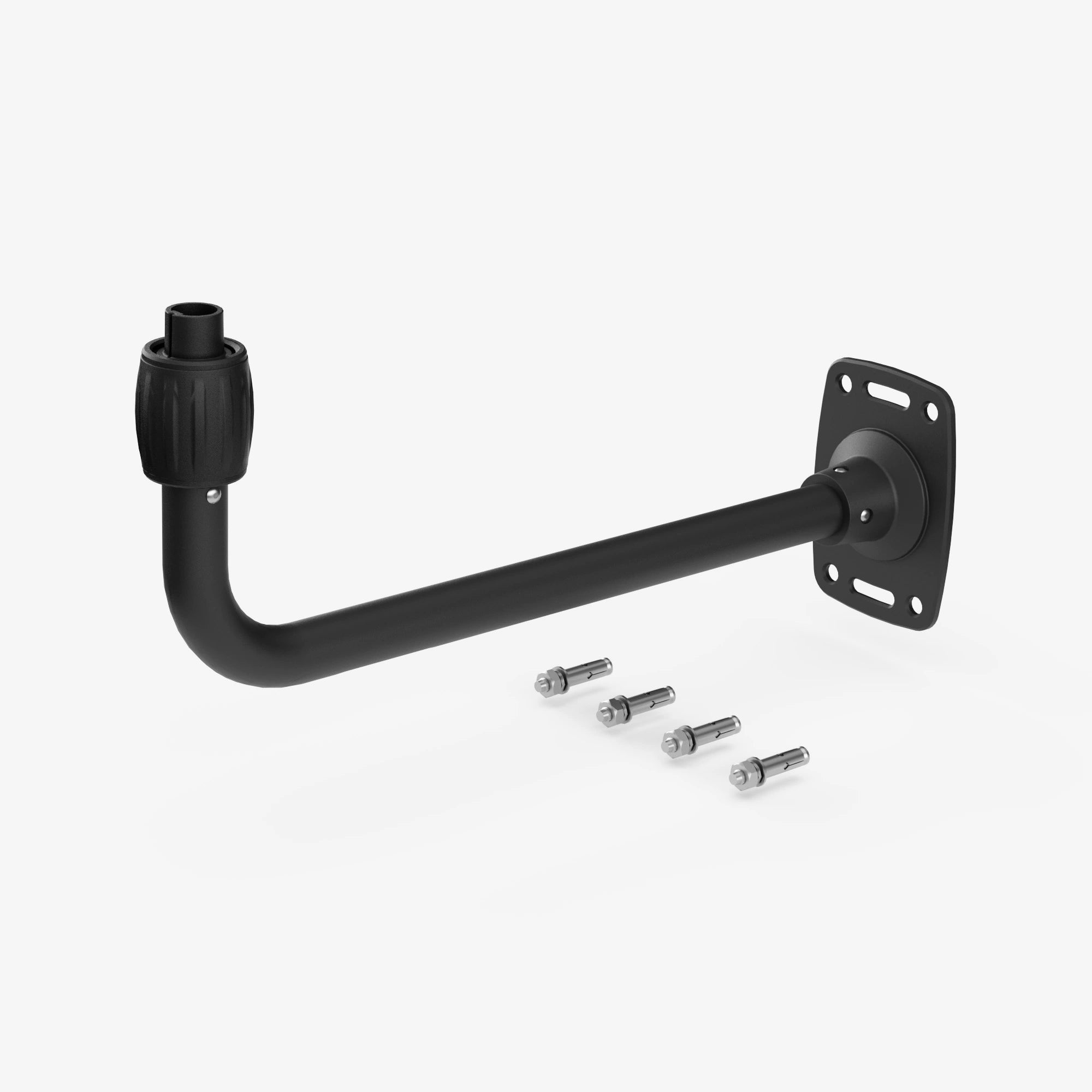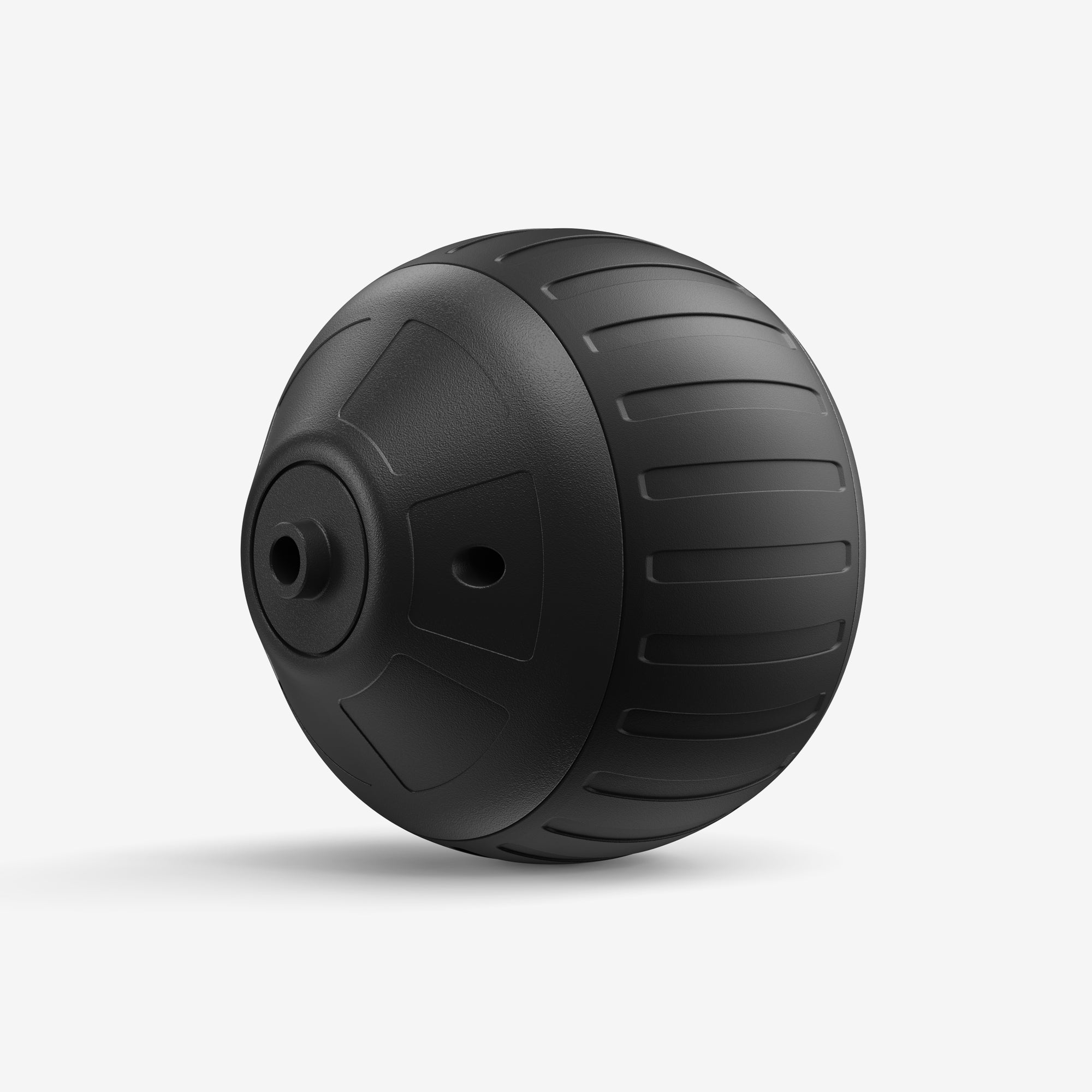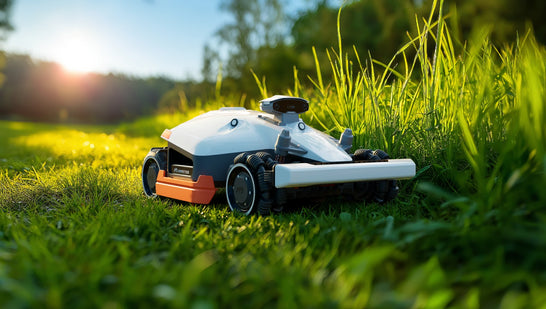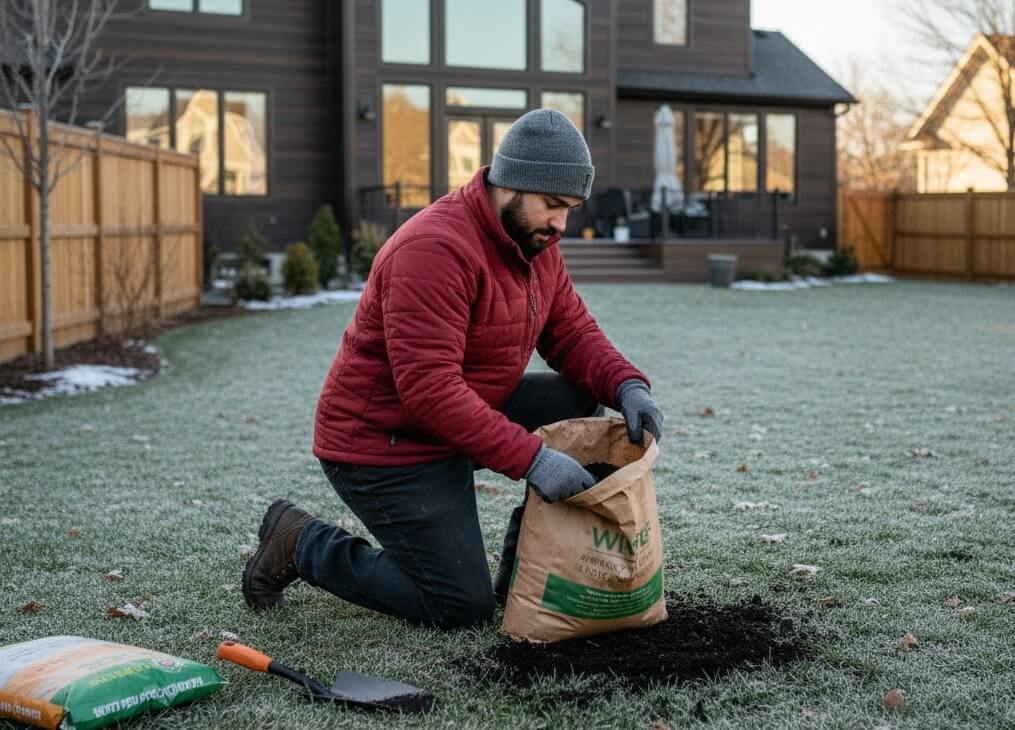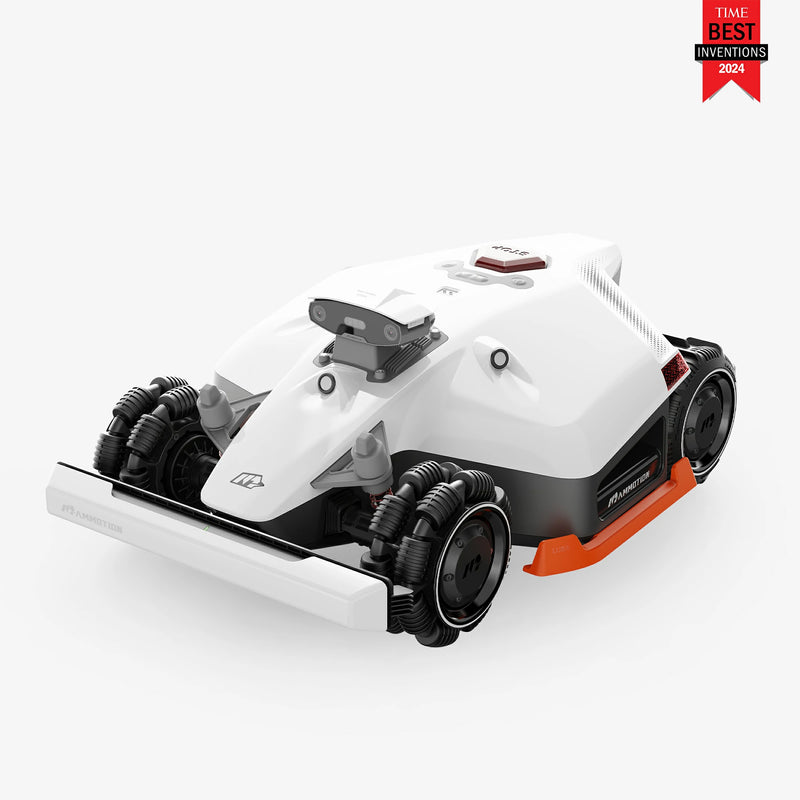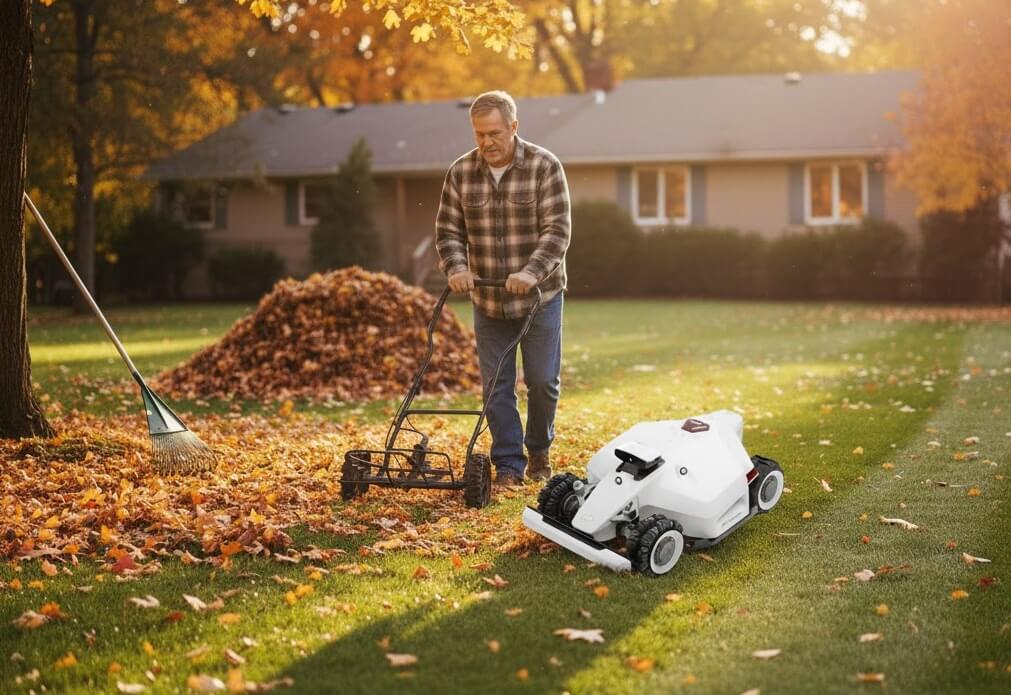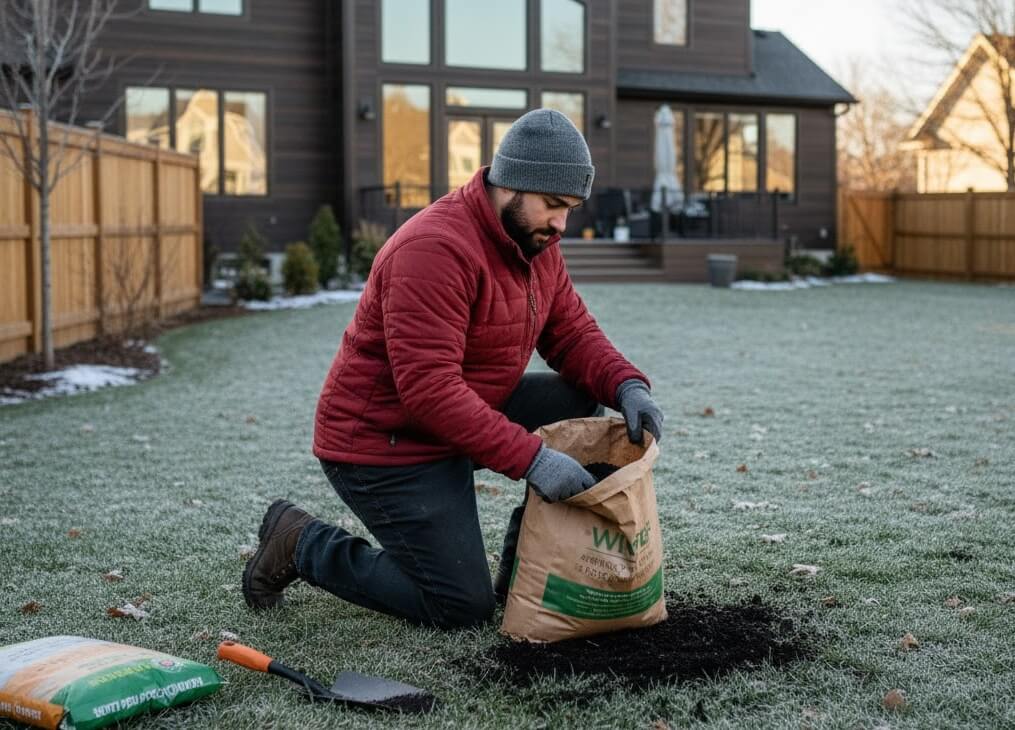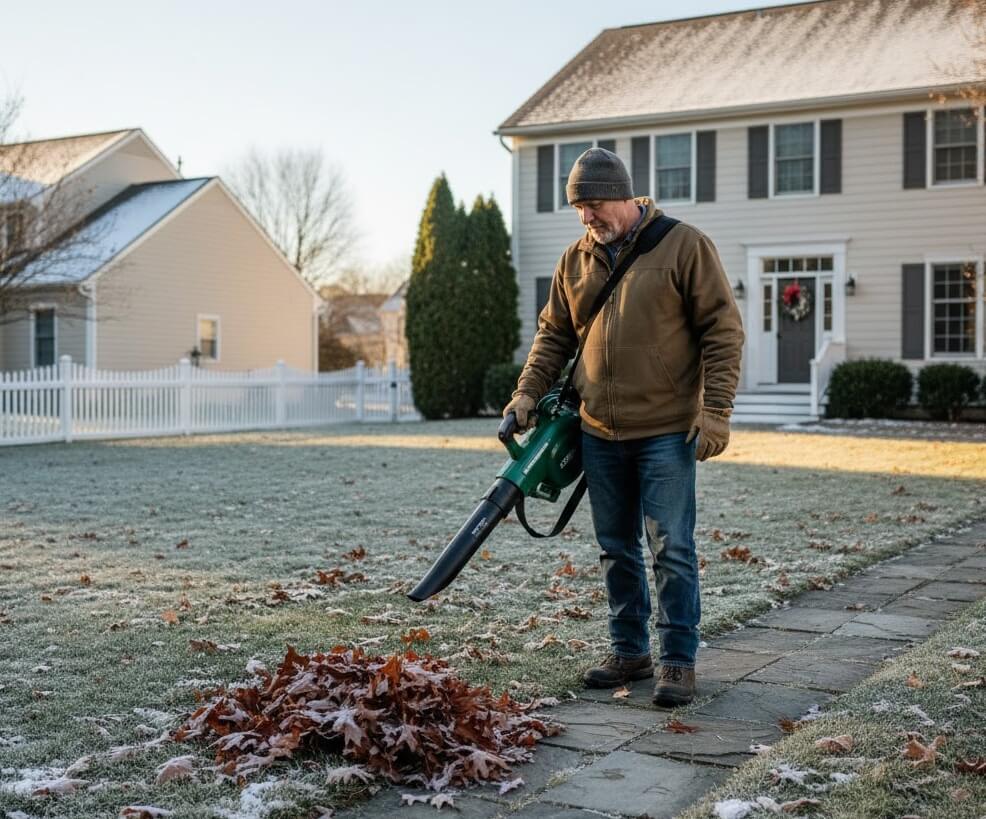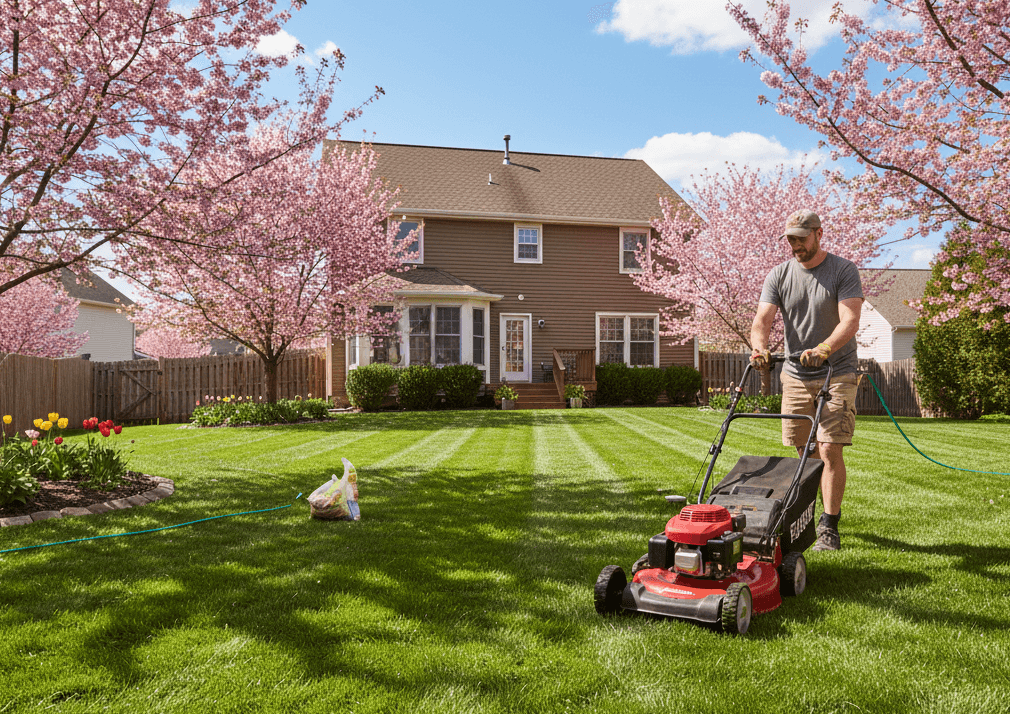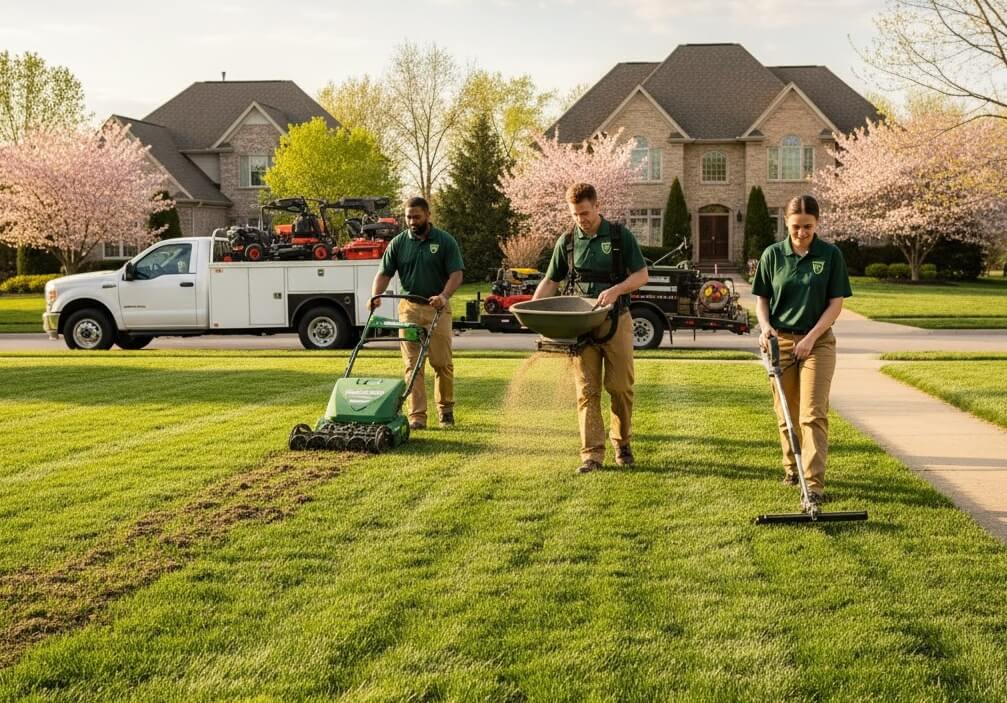As temperatures drop and days grow shorter, many homeowners assume lawn care can pause until spring. However, winter lawn care is a critical step in maintaining a lush, healthy yard. Proper attention during the cold months prevents disease, strengthens roots, and prepares your grass for vigorous growth when warmer weather returns.
This guide offers expert strategies for lawn maintenance in winter, including mowing, fertilization, soil preparation, and protective measures. Understanding how your lawn behaves in winter—whether you have cool-season or warm-season grass—allows you to implement the right practices for optimal results. Additionally, these tips include guidance for cold weather gardening, helping you protect shrubs, perennials, and even start indoor seedlings for a strong start in spring.
Understanding Your Lawn’s Winter Needs
Effective winter lawn care starts with understanding how your grass behaves in cold weather. Dormancy is a natural survival phase for many grass types, allowing energy conservation while protecting roots from harsh winter conditions. Recognizing this cycle guides proper winter maintenance strategies.
Types of Grass and Their Winter Behavior
- Cool-season grasses: Kentucky bluegrass, fescue, and ryegrass stay partially active in winter. They tolerate cooler temperatures and benefit from light maintenance, such as leaf clearing and occasional watering during dry spells.
- Warm-season grasses: Bermuda, Zoysia, and St. Augustine enter deep dormancy in cold climates, turning brown but storing energy in roots for spring recovery.
Identifying your grass type ensures you apply the correct lawn care in winter strategies, from mowing and fertilization to protective measures.
How Winter Affects Grass Health
Reduced growth and photosynthesis: Short days and cold temperatures slow energy production.
- Frost and freeze-thaw cycles: Repeated freezing can damage leaves and shallow roots.
- Snow and ice stress: Heavy accumulation may suffocate grass and promote fungal diseases.
By understanding these effects, homeowners can take steps like aeration, winter fertilizer application, and debris removal to protect roots, prevent disease, and prepare the lawn for spring growth.
Preparing Your Lawn for Winter
Proper preparation is the foundation of effective winter lawn care. By cleaning debris, adjusting mowing height, aerating soil, and applying winter-specific fertilizer, you protect your grass from cold stress, reduce disease risk, and ensure a stronger spring recovery.
1. Clean Up Your Lawn
Remove leaves, twigs, and other debris to prevent fungal growth and snow mold. A clean lawn allows sunlight and air to reach the grass and reduces the risk of pests sheltering in decaying matter. Use a rake, leaf blower, or mower attachment to efficiently clear your lawn.
2. Mow and Edge
Before the first frost, perform a final mow, trimming grass to 2–2.5 inches. This height prevents matting under snow while protecting roots. Edge borders for neatness and to reduce snow mold along pathways.
Pro Tip: Consider a robotic lawn mower, such as the Mammotion series, to maintain precise blade height and consistent mowing. Robotic mowers reduce manual effort, prevent scalp damage during late-season mowing, and keep grass uniformly trimmed even in dormant months.
3. Aerate the Soil
Aeration relieves soil compaction, promotes water and nutrient absorption, and encourages deeper roots. Conduct aeration in late fall, giving your lawn time to absorb nutrients before entering dormancy. Core aeration also helps lawns withstand freeze-thaw cycles.
4. Fertilize for Strength
Apply a winter-specific fertilizer high in potassium to strengthen roots and improve disease resistance. Use slow-release formulas for steady nutrient delivery throughout winter. Fertilize after aeration for maximum absorption and to prepare grass for cold stress.
Winter Lawn Maintenance Tips: What You Need to Do
Maintaining your lawn during winter ensures it emerges healthy in spring. Simple strategies like minimizing foot traffic, managing snow, monitoring for pests, and adjusting watering habits can prevent damage, reduce disease risk, and keep your grass resilient throughout the cold months.
1. Minimize Foot Traffic
Avoid walking on dormant grass whenever possible. Repeated pressure compacts soil, damages roots, and hinders spring recovery. Encourage family members and guests to use walkways or install temporary barriers in high-traffic areas.
2. Clear Snow Promptly
Heavy snow can suffocate grass and lead to mold growth. Shovel pathways carefully, and avoid piling snow onto the lawn. Distribute weight evenly when walking across snow-covered areas to prevent compaction.
Tip: Use lawn-safe, pet-friendly de-icers on nearby pathways to avoid chemical damage.
3. Monitor for Pests and Diseases
Even dormant lawns can suffer from winter fungi, like snow mold. Look for circular patches of discolored or dead grass. Remove debris, gently rake affected areas in early spring, and apply fungicide if necessary. Early detection minimizes damage and accelerates recovery.
4. Water Sparingly
Winter precipitation usually meets most moisture needs. Only water during dry spells when the soil is not frozen. Overwatering on frozen ground can cause mold or root rot. Proper moisture management helps maintain a healthy root system without encouraging disease.
Special Considerations for Cold Weather Gardening
Winter is an ideal time to plan and protect your garden. While focusing on winter lawn care, you can also prepare perennials, shrubs, and indoor seedlings, ensuring your garden thrives and transitions smoothly into spring growth.
1. Plan Your Spring Garden
Use the winter months to review last year’s garden performance. Identify plants that thrived and those that struggled, and research new varieties or layout improvements. Creating a garden plan now saves time in spring and helps ensure a vibrant, organized outdoor space.
Tip: Maintain a garden journal to track ideas, plant preferences, and seasonal goals. This serves as a reference for planting, fertilization, and maintenance schedules in the coming year.
2. Protect Perennials and Shrubs
Insulate perennials and shrubs from frost and harsh winds using mulch, straw, or burlap. Mulch regulates soil temperature and moisture, while burlap shields delicate plants from wind and snow damage.
Pro Tip: Check protective coverings periodically to ensure they remain effective throughout winter. Proper insulation improves survival rates and reduces spring recovery time.
3. Start Indoor Seedlings
Winter is an excellent time to start seedlings indoors for early spring planting. Choose plants suited for your climate and germination requirements. Indoor seed starting provides a controlled environment, allowing plants to develop strong roots and leaves before transplanting.
Tip: Use quality potting soil, adequate lighting, and appropriate containers to maximize seedling health. By starting early, you can achieve an earlier, more productive outdoor growing season.
Final Thoughts on Winter Lawn Care
Effective winter lawn care is about preparation, maintenance, and vigilance. Make a lawn care plan if possible. By investing effort during the colder months, you protect your grass, prevent disease, and ensure a strong, vibrant lawn when spring arrives.
By following these strategies, your lawn will remain resilient during winter and emerge healthy, dense, and ready for growth. A little care now pays off with a stunning, low-maintenance lawn in spring.

